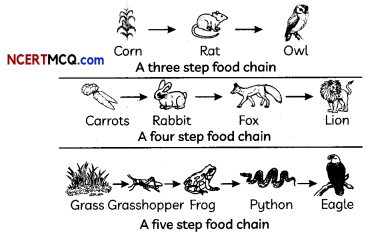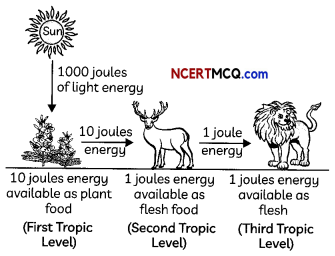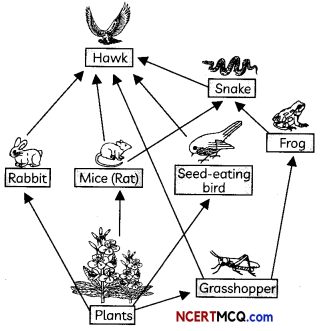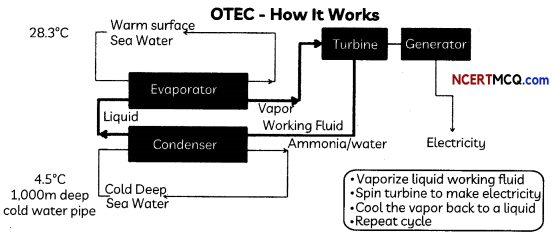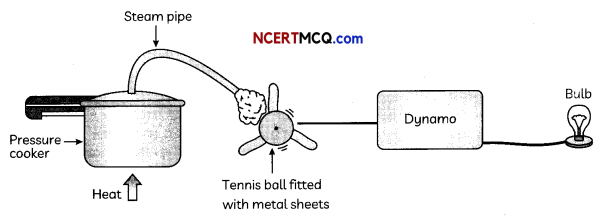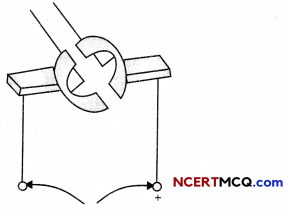Forests and Wildlife
Forests are ‘biodiversity hot spots’. One measure of biodiversity of an area is the number of species found there. One of the main aims of conservation is to try and preserve the biodiversity we have inherited as a loss of diversity may lead to a loss of ecological stability.
Stakeholders
When we consider the conservation of forests, we need to Look at the stakeholders who are:
- The people who live in or around forests are dependent on forest produce for various aspects of their life.
- The Forest Department of the Government which owns the land and controls the resources from forests.
- The industrialists from those who use ‘tendu’ leaves to make bidis to the ones with paper mills -who use various forest produce and consider the forest as a source of raw materials for their factories.
- The wild life and nature enthusiasts who want to conserve nature in its pristine form.
![]()
Use of Forest Resources
When the Forest Department in independent India took over from the British, local knowledge and local needs continued to be ignored in the management practices. Thus vast tracts of forests have been converted to monocultures of pine, teak or eucalyptus. Such plantations are useful for the industries to ac-cess specific products and are an important source of revenue for the Forest Department.
The case of Khejri Trees: In 1731, Amrita Devi Bishnoi led a group of 363 persons who sacrificed their lives along with her for the protection of khejri trees in khejrali village near Jodhpur. The Government has recently instituted an ‘Amrita Devi Bishnoi National Award for Wildlife Conservation in the memory of Amrita Devi Bishnoi.
The Chipko Andolan: The Chipko Andolan (‘Hug the Trees Movement’) was the result of a grassroot level effort to end the alienation of people from their forests. The movement originated from an incident in a remote village called Reni in Garhwal, high-up in the Himalayas during the early 1970s. The Chipko movement quickly spread across communities and media, and forced the government, to whom the forest belongs, to rethink their priorities in the use of forest produce.
Prejudice against the traditional use of forest areas:
The Great Himalayan National Park contains, within its reserved area, alpine meadows which were grazed by sheep in summer. Nomadic shepherds drove their flock up from the valleys every summer. When this national park was formed, this practice was put to an end. Now it is seen that without the regular grazing by sheep the grass first grows very tall, and then falls over preventing fresh growth.
Management of protected areas, by keeping the local people out by using force cannot possibly be successful in the long run.
Reasons for Damage Caused to Forests
- The damage caused to forests cannot be attributed to only the local people.
- One cannot turn a blind eye to the deforestation caused by industrial needs or development projects Like building roads or dams.
- The damage caused in these reserves by tourists or the arrangements made for their convenience is also to be considered.
- We need to accept that human intervention has been very much a part of the forest landscape.
Steps Needed to Preserve our Forests
- What has to be managed in the nature and extent of this intervention.
- Forest resources ought to be used in a manner that is both environmentally and developmentally sound-in other words, while the environment is preserved, the benefits of the controlled exploitation go to the local people, a process in which decentralized economic growth and ecological conservation go hand in hand.
- The kind of economic and social development we want will ultimately determine whether the environment will be conserved or further destroyed.
- The environment must not be regarded as a pristine collection of plants and animals. It is a vast and complex entity that offers a range of natural resources for our use.
- We need to use these resources with due caution for our economic and social growth and to meet our material aspirations.
![]()
Sustainable Management
The destruction of forests affected not just the availability of forest products, but also the quality of soil and the sources of water. Participation of the local people can indeed lead to the efficient management of forests.
An Example of People’s Participation in the Management of Forests
In 1972, the West Bengal Forest Department recognized its failures in reviving the degraded sal forests in the southwestern districts of the state. The Department changed its strategy, making a beginning in the Arabari forest range of Midnapore district. At the instance of a far-seeing forest officer, A.K. Banerjee, villagers were involved in the protection of 1,272 hectares of badly degraded sal forest. In return for help in protection, villagers were given employment in both silviculture and harvesting operations, 25 percent of the final harvest, and allowed fuelwood and fodder collection on payment of a nominal fee. Soon, these forests of Arabari underwent a remarkable recovery – by 1983, a previously worthless forest was valued Rs 12.5 crores.
Example 1.
We saw in this chapter that there are four main stakeholders when it comes to forests and wildlife. Which among these should have the authority to decide the management of forest produce? Why do you think so?
Answer:
There are four stakeholders when it comes to forests and wildlife: the people who live in or around forests are dependent on forest produce, the Forest Department of the Government which controls the resources from forests, the industrialists who use various forest produce, and, the wild life and nature enthusiasts.
As the local people are directly dependent on the forest, they should be given the authority to decide the management of forest produce as they use traditional methods of exploitation of these resources which ensure that the resources are used in a sustainable manner. Moreover, their existence is directly dependent on these forests and therefore they will not exploit the resources in a manner that could lead to deforestation.

